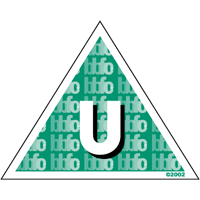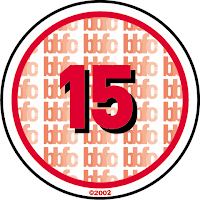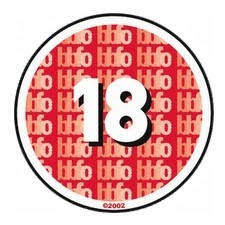Monday 5 April 2010
Evaluation
Sunday 4 April 2010
Opening Sequence: HELPLESS
Initial Feedback
Tuesday 23 March 2010
Monday 1 March 2010
Film Classification Research






Saturday 20 February 2010
Alfred Hitchcock: Psycho
Examining 2 scenes from Alfred Hitchcock’s psycho and how he creates suspense.
But first I want to talk about a scene that happens earlier. From the point where Marion arrives at the the bates motel, straight away you can tell that the vibe isn't quite right. When Marion arrives, it is raining heavily, there are no other cars parked in the car park and no lights appear to be on in the rooms, indicating there is nobody occupying the rooms.
When Marion checks into the motel The scene begins with what appears to be an innocent invitation from Norman to Marion Crane (Janet Leigh), the unsuspecting guest at the Bates Motel, to come into "the parlour." The use of the word parlour--as in "'come into my parlour" said the spider to the fly--establishes the tenor of the scene. The significance of this brief line becomes all the more apparent at the end of the film when Norman's "mother", who has by now consumed Norman's mind and soul, looks directly into the camera and says that "she" would not "even hurt a fly."
Marion accepts the invitation to sit with him in his parlour. Hitchcock sets up the room so it looks barely big enough for two chairs, there is one source of light, the Tiffany lamp on the lamp table. this light is key to the scene. Hitchcock positions the characters to that Marion is seated behind the light so her- like the lamp are lit up with a warm glow, despite the fact she is not as innocent and she looks. However bates is harshly lit in the corner of the room- his face is dark and shadowed. I also noticed that behind Marion there is a round oval picture frame and behind Bates there are angular picture frames. Indicating that Bates' character is harsh and blunt whereas Marion's character is soft, innocent and gentle.
These are all prime examples of how Hitchcock creates suspense. The audience knows something isn't quite right. Even without a trained eye to notice the picture frames and the lighting, subconsciously this information will go into every single one of the audience's heads and build the suspense and tension for them.
Now i want to talk about the very famous and iconic scene, everybody knows about. Hitchcock creates suspense very well by the way he uses the camera position, angles, movement and shots and lighting when he wants to shock his audience or create suspense. He also uses suspense building music with lots of bowed string instruments for example violins and cellos, with sharp choppy high pitched notes to add to the shock of what the audience has just witnessed. He used music like this when Marion Crane got brutally murdered, when the murderer is sneaking up on her, it is silent, all that can be heard is the water from the shower and all that can be seen is an unaware Marion Crane and someone’s shadows behind the shower curtain, no music is played here because I think Hitchcock wanted the audience to build the suspense up themselves, to let their imagination run wild for what they should think is about to happen, due to Hitchcocks decisions earlier in the film. To make
Hitchcock, quite abruptly kills off the main character, that had never been done before. it would leave questions in the audiences heads, for example, how is the film going to carry on with know lead? This would create curiosity but tension and suspense at the same time. at the time when this film came out, viewers couldn't believe what had happened.
The scene runs for 3 minutes, includes 50 cuts and 77 camera angles. The fast cuts and dramatic close ups make the scene seem more violent and controlled than a wider shot would have done. The way that Hitchcock had the camera taking on almost a point of view shot in the killers perspective made the scene even more dramatic as it took all control away from the lead character that the audience has come to understand and sympathise with. the vulnerability of Marion is really emphasised here. throughout the film she has been the strong one, the lead, the powerful one and its just swapped to someone the audience barely knows in a matter of seconds.
To conclude, the way that Hitchcock creates suspense and tension is by using very clever fast cuts, carefully selected camera angles, music and scenery. however since 1960 technology has been brought on and improved, so if Hitchcock was to make this film again today, the murder would be a lot more convincing, although its not about the murder as such, what creates the shock and suspense is like I said everything else that helps build up to that point of the murder.
Sunday 14 February 2010
Taking Lives Essay
Taking Lives conforms to what I consider to be the forms and conventions of a thriller genre by all the techniques used to play with the viewer’s mind without actually showing anything, just letting the imagination of the audience take over.
One of these techniques is creating suspense and tension by playing music which creates tension, like the ‘Jaws’ theme tune for example, when this tune is played the audience automatically start asking questions in their heads, what’s going to happen? What or who is following them? Who’s the murderer? Half the time nothing ever happens, but the human imagination is far too good to notice. Without Suspense and tension thriller movies are not possible, this is why playing music conforms to what I consider to be the forms and conventions of a thriller genre.
Twists can also play a big part in thriller genres; Taking Lives features a big twist which becomes apparent at the end of the film, to make this twist work, a protagonist is used, without one most twists wouldn’t work. By including a protagonist the audience becomes familiar with them, almost as if they know the person face to face, so when the twist is revealed the viewers are shocked. The character of the protagonist in Taking Lives is a normal working class man who lives a relatively normal life that the audience will be able to relate to, this is why he is a good character to be the protagonist to keep the audience guessing throughout the film, revealing little bits at a time.
You could say Angelina Jolie who plays the lead role of Illeana Scott, a top F.B.I agent, is a protagonist at the end of the film too. Although she is a genuine character all the way through the film, she fools the murderer by pretending to be pregnant with his baby however the audience don’t know any better either. She manages so stab the murderer after he stabs her ‘’pregnant’’ tummy, but as he is about to dye she pulls out a rubber pregnant tummy, so in this sense you could say she is a protagonist as well, to create even more of a twist. Without a protagonist of some sort the film would probably be too predictable, which is why twists conform to what I consider to be the forms and conventions of a thriller genre.
Action sequences can help a lot in a thriller genre. Going back to suspense and tension, with an action sequence tension will build in the audience because they won’t know the outcome. Say the action sequence is a fight, or a struggle between two people, or a car chase, if the protagonist is involved, the audience should hopefully, if the film is done well, be sat in their seats glued to the screen hoping that the unsuspecting character won’t get hurt. Action sequences conform to what I consider to be the forms and conventions of a thriller genre.
The whole film is full of puzzles, mysteries, twists and surprises. These help when keeping the audience guessing, as soon as they may think one thing, it immediately becomes apparent that that would be impossible.
About half an hour from the end, the audience finds out who the murderer is, the protagonist who is played by Ethan Hawke, after spending the entire film wondering who the murderer is, they then find out it is the least expecting character, this always has a big impact on thrillers because the suspense builds up in the viewers heads while they’re wondering how the film is going to end. After physically seeing the murderer in action it goes to seven months later which is part of a second twist, Agent Scott devised a plan of pretending to become pregnant, she knew he was watching her the whole time, it was just a case of waiting for him to make an appearance again, however again the audience didn’t know this was going on, they thought that she was genuinely pregnant as she had a one night with the murderer before she knew he was a psycho. This is another way of how taking lives conforms to what I consider to be the forms and conventions of a thriller genre.
To conclude the ways that ‘Taking Lives’ conform to or subvert to what I consider to be the forms and conventions of a thriller genre I would say that with suspense, tension, the use of protagonist’s on more than one occasion and the way that the audience can relate to them, the action sequences and the puzzles the mysteries the twists and surprises, this is what creates a thriller, the right use of each one of these in the right places makes a excellent film, which is exactly what D.J Caruso did in ‘Taking Lives’. He kept the audience guessing almost every step of the way, and revealed the whole story in a very clever manner to make a bigger impact on the audience, so when the film is over they think to themselves that they had no idea that’s how the film was going to end.








